I go for a last bye-bye to the sand dunes, as close as I can get with the bike without sinking into the sand. All the Touareg camel guides look sad, having no one to hassle and waiting in the long sunny day. It’s the dead season, and Merzouga feels dead too.
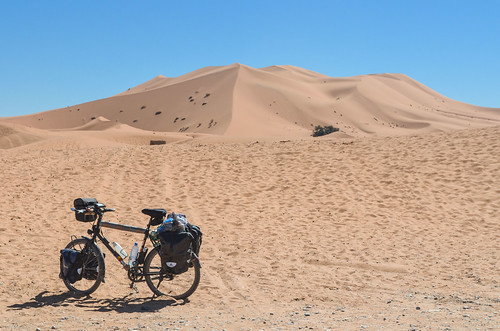
My next destination is the High Atlas. It may seem strange to cycle mountains, desert, mountains again, and desert again, but it’s not exactly going back and forth. I will explain later my strategy on the route planning.
So I cycle back to Erfoud, from where I left my route to pull this stretch until Merzouga. It makes a return trip of 120 km just to see the dunes and the desert, more than I thought at first.
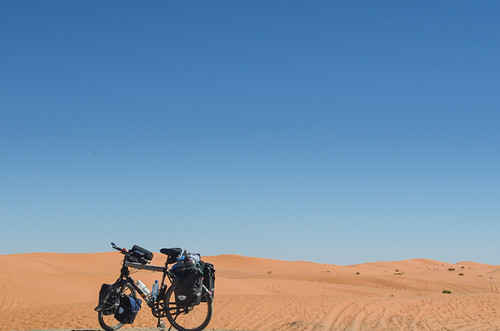
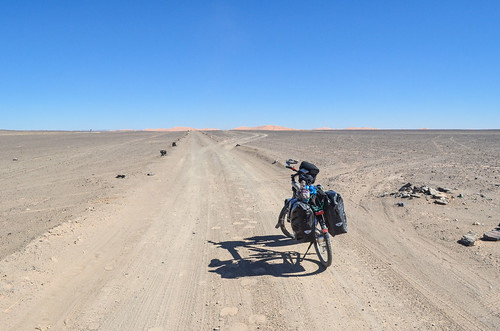
I witness my first mini sand tornado from the road, whirlpooling about 200 meters away. Nice to watch from afar, but I don’t know what I would do if it was around me. I also meet for the third time (only) other cyclists, from Holland.
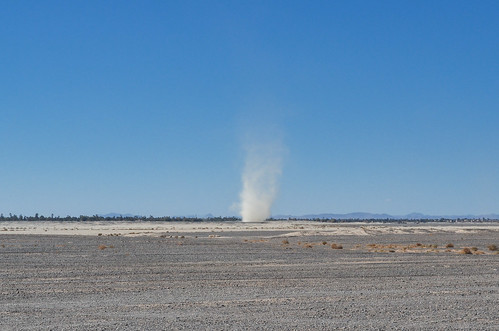

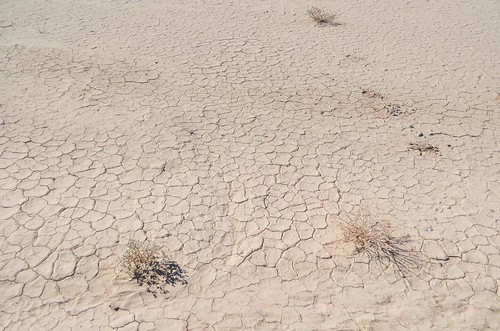
On this road, I see as many “fossils and minerals” shops as I see signs for high-end accommodation. At the visit of one of them, smartly disguised into a museum, I am presented many bones and replicas of dinosaurs. The guy tells me that bones, shark teeth and fossils can be found easily in the region of Imilchil in the Atlas. And that Europeans come to make illegal exports. Taouz and Dakhla in the Western Sahara are other sites renowned for bones.
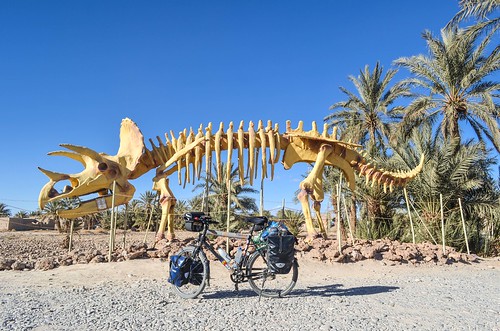

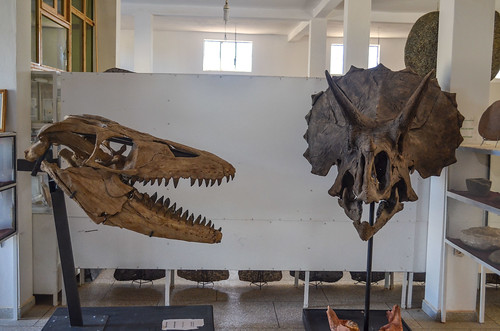
The road has a light wind, that often changes direction. I turn left in Erfoud to head to Tinherir/Tinghir, at the foot of the High Atlas mountains. The desert is fun, but the amazement of the landscape evaporates quickly, unlike when on a narrow road at the edge of snowy mountains, always entertaining. I find a good campspot in a cultivated area of something, near Jorf, on hard sand. This night out allows me to make a recap of the sky constellations.
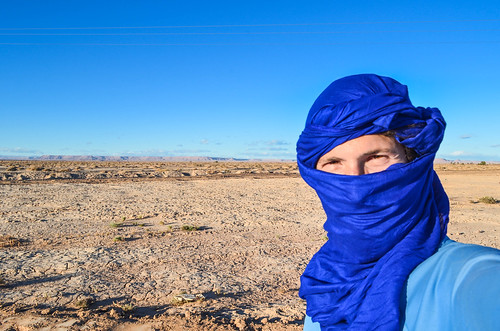
A donkey without a master visits me while the sunrise sun rays try to warm my back. After packing and heading for a long road, crossing the town of Jorf, I am stopped for a tea at a Berber hut in a place where even big tourist buses, probably on their way between Ouarzazate and Merzouga, make a stop. The Berber huts have signs imitating the “Rest area” signs of the highways. They are huts of nomads of the mountains, who live in the warmer plains during the winter, and among other sell fossils collected and polished during the summer.
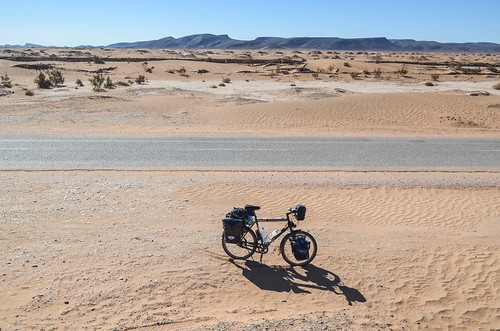
The Berber huts are gathered here for the water wells of Rhettaras. The desert is here decorated with lines of sand hills, which are not here just for decoration.

I am explained that they date from the 2nd century, and are part of an underground water system.The people at that time have built it to transport the water from a source in the mountains nearby, that disappear under the ground, until a palm field, the green area I have just passed. That makes a lot of work for not having pipes, if they hand dug 20 meters deep holes every 20 meters for kilometers. All those holes served to excavate the sand of the underground tunnel and are still used for maintenance.
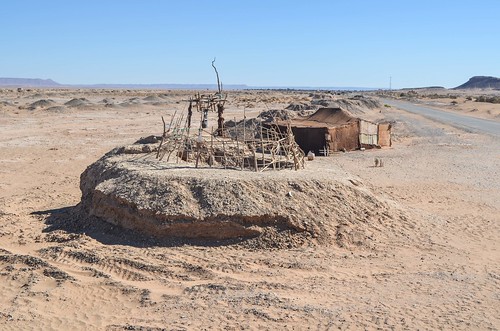

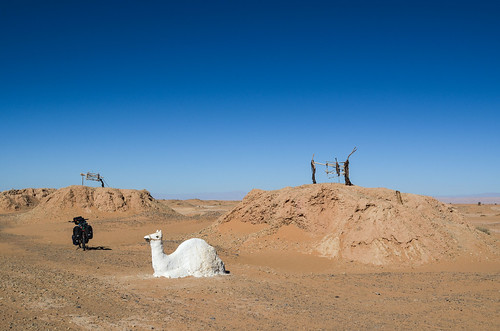
The road is empty and I am not likely to find a place to eat, and should do only with buying what I can find in the little stores of the villages. Two delicious big round breads (the khobz are different every 100 km, and the ones around Erfoud are the best so far), a tin of fish with enough oil to eat a whole bread with it, 2 yogurts, half a kilo of fresh olives with pickles and spices, a new cheese (I finally found something else than Vache-qui-rit: a big Spanish Babybel with a bad taste and even no opening system in the red wax), and I am done for 2 meals with 4€.
I sit with a chiba tea and watch the road. Morocco seems to be a country for camper vans. School kids go through the village with their old bikes, I see many Peugeot among them. Regarding the cars, there’s not as many Mercedes as in the north, but many Renault Kangoos here.
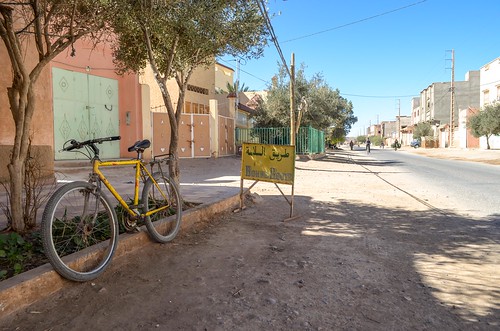
I jump on the road for another long section of nothing. I just have to cover my head, disconnect my brain, and pedal.
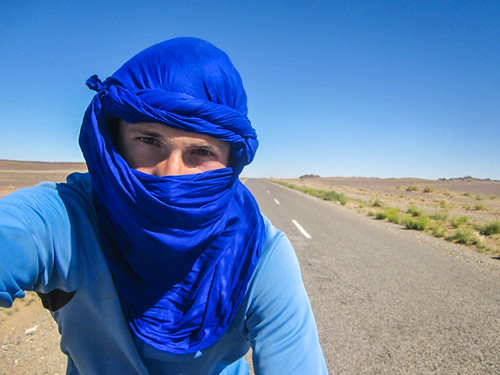
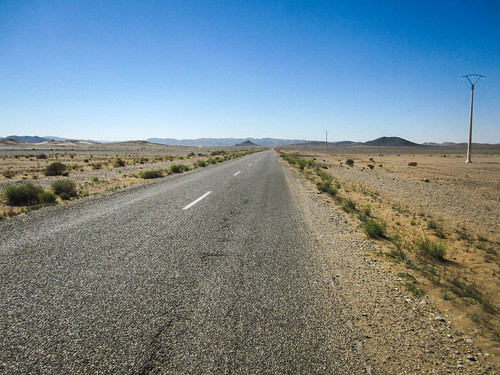

This goes on until I reach the N10, where I am rewarded with a Coca-cola. I usually drink only water, but after a long time under the sun, something cold with a lot of sugar fits very well. There, a orange juice man exhibits his collection of postcards. He is not selling them, but receiving and collecting from everyone who visits his shop. And he has a huge number, considered the unattractive location of the café. From the dune du Pyla, Israël, Sri Lanka, South Africa, … all sorted by country of origin. He speaks a bit of Swiss-German, it’s as usual very ugly to hear, even more in the desert, and already the second time it happens to me in Morocco.
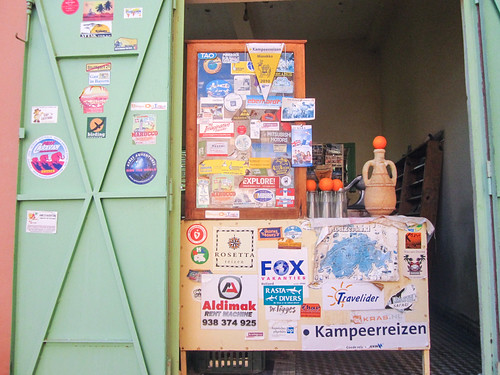

I realize also that not only on my Michelin map, but also on every map of Morocco displayed in cafés and other places, the international border with Algeria is never drawn. There is a clear delimitation with Mauritania in the south, with Algeria by the Mediterranean sea, but nothing for the desert along the highway Abadia – Tindouf. The sand war explains why this border is delicate. It makes me think also that the engineers at Google Maps must have political working sessions when they publish some maps.
I am good to go for another 60 km as I can reach Tinghir tonight with my current good pace.
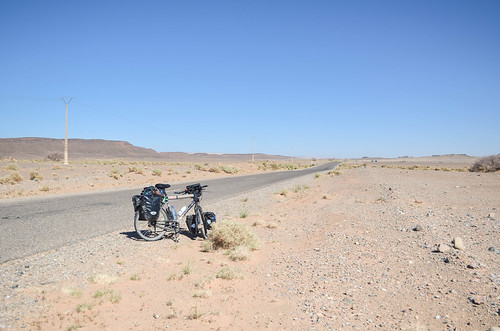


I see the mountains again on my right, it’s on the menu for tomorrow.
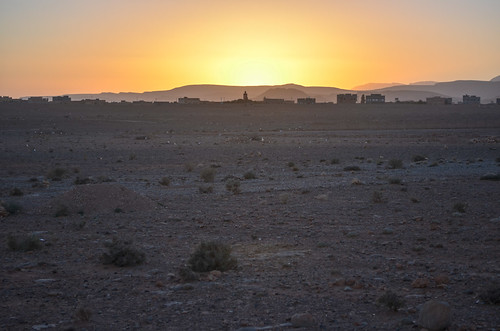
I have to deal twice with drunk guys at 6 pm, and it makes me support the enforcement of the ban on alcohol, always used as an addictive drug instead of a drink. I finally get to the central hotel at 50 dh, finish off my legs by carrying my loaded bike over 2 floors after 132 km of desert roads, and go shopping for fruits while everyone is watching the Real Madrid.
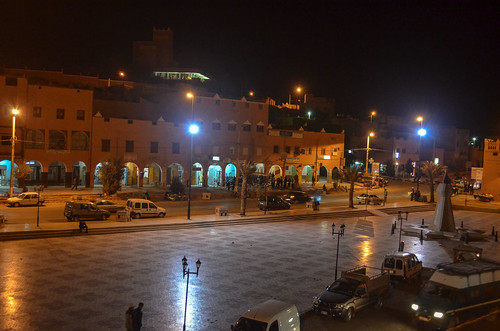
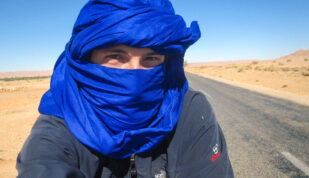

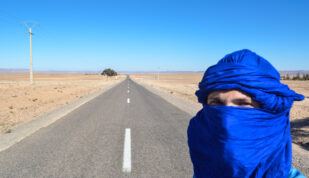
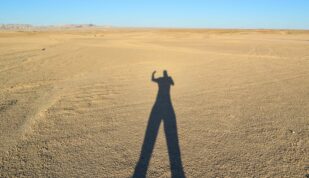

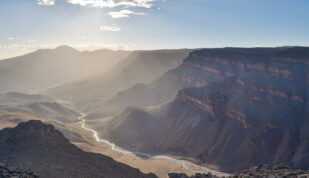
Hi Jean Baptiste,
It is great to see you on and about picking up a new adventure like this. I really enjoy seeing that you have posted a new story of your adventure through Facebook. I doubt if you remember it, but we have met one time in Kyoto, Japan in 2008 where we went to a sushi restaurant with a large group and sat at the riverbank with a drink.
To bad that you are not going further South to the desert. Last December, I went there to do research in the desert near M’Hamid (Southeast of Zagora) at Bivouac Le Petit Prince. I would have recommended that place to you if you were going there.
Anyway, there is one thing I should mention being Dutch. Although it may be a bit complicated, Most Dutch people come from the Netherlands and not Holland. Born and raised near Amsterdam, I am Dutch, from the Netherlands and a “Hollander”. Holland is a “small” region which is part of the Netherlands. I don’t know if the people you have met were Hollanders like me.
With that being said, I am looking forward to read more about your adventure. Best of luck on your travels and may you experience many new things.
Peace,
Sure I remember those sweet Kyoto CS times! Thanks for your words.
I didn’t go until M’Hamid. You must have been nice and quiet there as tourists seem to go to Merzouga or stop in Zagora. I meet one policeman from M’Hamid but in Tighmi only …
Anyways thanks for the Dutch correction. I have then 36% of chances to be right.